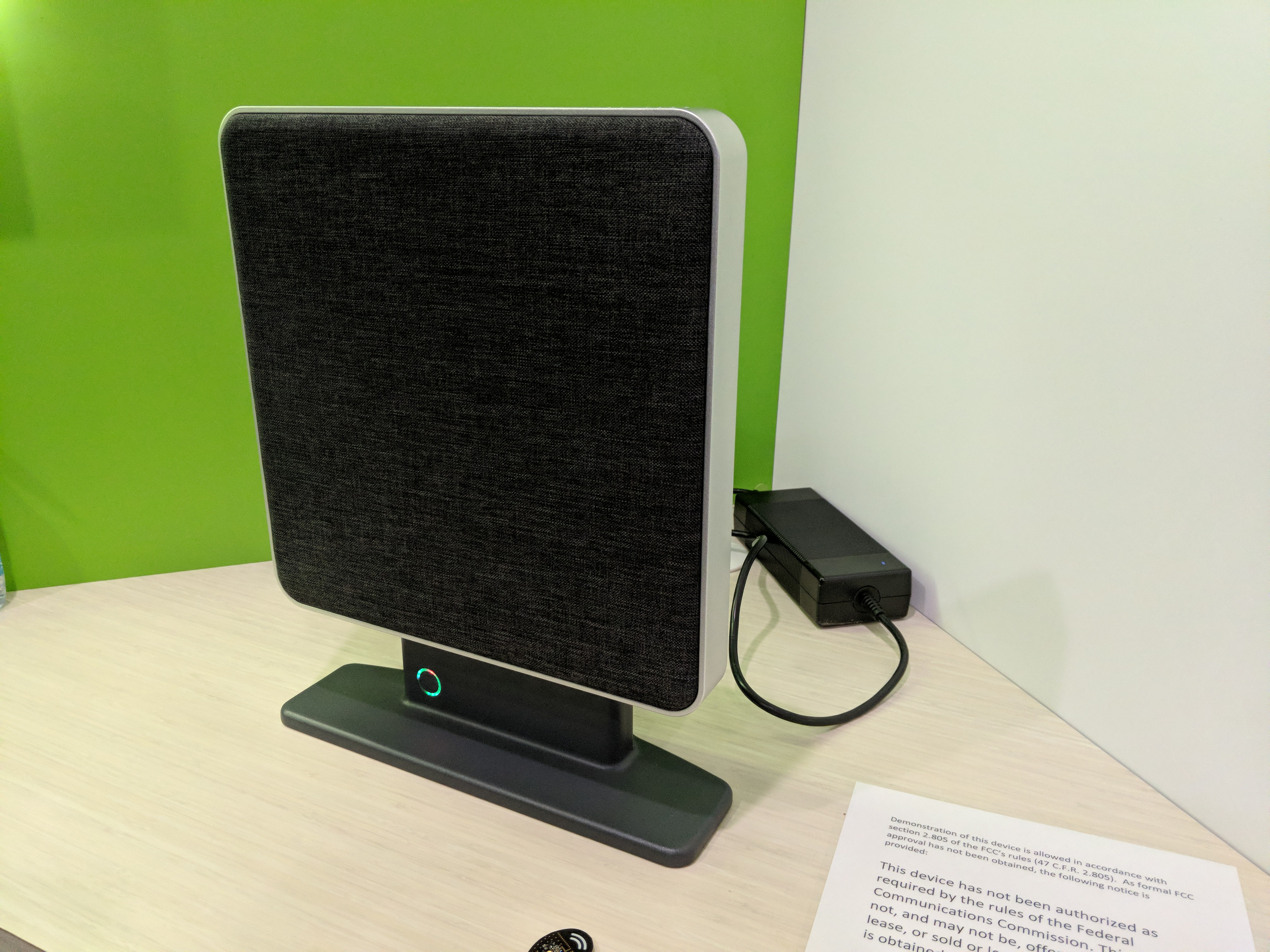Ossia Cota Home Can Wirelessly Charge Your Phone While It’s in Your Pocket
Ossia's finalizing its Cota Home transmitter for bringing over-the-air charging to your own house.
Ossia is close to making it so your phone can start charging just by walking into your home. Today at CES it announced a version of its Cota wireless, over-the-air charging technology that’s fit for using in your house.
Cota Home is a 30 x 30 cm transmitter working on a 5.8 GHz frequency that can send power to a number of devices simultaneously. Once you plug in the transmitter, which Ossia is working on slimming down even more, you can manage it via Cota’s mobile app. And you won’t waste a lot of power because the transmitter only sends out power if a receiver is present.
But to use this incredibly convenient tech, you’ll need something with a Cota receiver. Ossia’s been working with popular smartphone case maker Spigen for Android and Apple smartphone cases that will charge the devices once they’re in the presence of an Ossia transmitter.
Keep in mind, your phone can be in your pocket or even locked away in a drawer. Unlike competitors, the receiver doesn't have to be within line-of-sight of the transmitter for it to work . But for the fastest charge, you must be within 3 meters (9.8 feet) of the transmitter.
Cota works with RF technology. When asked if this was safe, CEO Mario Obeidat pointed to FCC certification the Cota transmitter and receiver acquired in June for working at 2.4 GHz at a distance of up 1m and using the highest level of radio frequency power of any other certified system. Currently it’s certified for almost 1W, Obeidat said, but the transmitter could go up to 2-3W.
Before Cota Home can get into, well, homes, Ossia needs certification for 5.8 GHz, which it said it’s hoping to get this year. The company’s also looking for the Spigen cases, which we’ve been told are expected to cost around $100, to arrive this year too. We just hope the two vendors make things easy and bundle the transmitter and case together.
Get Tom's Hardware's best news and in-depth reviews, straight to your inbox.

Scharon Harding has over a decade of experience reporting on technology with a special affinity for gaming peripherals (especially monitors), laptops, and virtual reality. Previously, she covered business technology, including hardware, software, cyber security, cloud, and other IT happenings, at Channelnomics, with bylines at CRN UK.
-
TJ Hooker ReplyCota Home is a 30 x 30cm transmitter working on a 5.8 GHz frequency
Cota works with infrared technology
This doesn't seem to match up. Should "infrared" instead be "microwave" or "RF"?. -
Olle P What a crappy idea of a product! Nicola Tesla patented this idea in 1914.Reply
The main problem is that the transfered energy drop quickly with the distance so the vast majority of the power sent out from the charger will be wasted.
A 1.0A USB charger provides 5W of power to the phone via cable.
Here a 3W omnidirectional transmitter would, at best, provide more like 0.001W of power to the phone (which is less than what it use when powered on).
To make the charger efficient it might be possible to use a variable aperture directional antenna, like the ones used in for example military radars, to send a narrow beam directly at each device. But then the price of the charger would end up at several thousand USD... -
TJ Hooker Reply
Not really, you just need multiple antennas to form a phased array. Your home router probably already does this, referred to as beamforming.Olle P said:To make the charger efficient it might be possible to use a variable aperture directional antenna, like the ones used in for example military radars, to send a narrow beam directly at each device. But then the price of the charger would end up at several thousand USD... -
Olle P Reply
You think that's good enough to hit a ½" target at 5 yds with a minimum of spillover?TJ Hooker said:... you just need multiple antennas to form a phased array. ... referred to as beamforming.
I've just read the whitepaper from Ossia and it didn't clarify anything.
The only deviation from Tom's atricle is that in the whitepaper they state 20W as the transmitter power and think 1W at the receiver is very good efficiency! -
TJ Hooker The point I was trying to make was merely that creating an 'aim-able' directional antenna is practical even in cheap consumer hardware, e.g. beamforming in home wireless APs. I have no idea how tightly those sort of cheap consumer implementations are capable of aiming though. I agree that 5% efficiency sounds pretty bad.Reply
Strangely enough, that whitepaper presents beamforming as a (poor) alternative to Cota, which implies that Cota uses some other method 'aim' its power. No details are provided on what that method is though. Also, they list Technovator as an example of RF beamforming, but from what I can find Technovator's solution uses near field resonant coupling, so not RF beamforming at all.
Unfortunately that "whitepaper" seems more like a promo piece than an actual technical document.
